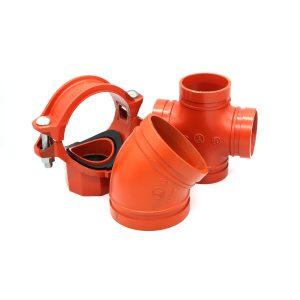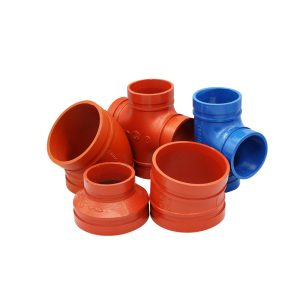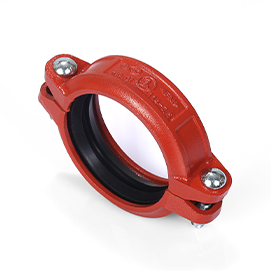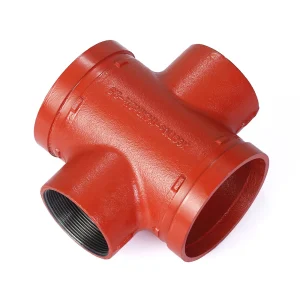Ever tackled a massive construction gig where every hour counts? You know, the kind where delays stack up like bad traffic on a Monday morning. That’s exactly what happened on this one huge project in Beijing – yeah, the National Centre for the Performing Arts. Picture this: a sprawling 165,000 square meter beast, standing 46 meters tall, wrapped up back in 2007. Deadlines were tight, crews were hustling, and traditional pipe fitting methods? They were dragging everything down. But then, grooved elbows came into play, slashing install times like nobody’s business. In this case study, we’ll dive into how these fittings turned the tide, backed by real numbers and on-site stories. If you’re in HVAC, fire protection, or any big industrial setup, stick around – this might just save you some headaches down the road.
Project Overview: Setting the Stage in Beijing
Let’s rewind to the early 2000s. The National Centre for the Performing Arts – folks around here call it the “Egg” for its funky oval shape – was no small fry. We’re talking about a cultural icon smack in the heart of Beijing, designed to host operas, ballets, you name it. The build kicked off with high stakes: government eyes on it, international architects involved, and a completion deadline that left little room for slip-ups. By September 2007, it had to be ready, no excuses.
The piping system was a monster. Miles of ducts for HVAC, fire suppression lines weaving through the structure, and water supply networks that had to handle massive crowds. Traditional welding or threading? That was the go-to back then, but man, it chewed up time. Welders needed certifications, setups took forever, and one wrong move meant leaks or rework. The team – a mix of local contractors and engineers – estimated the piping alone would eat up 30% of the total labor hours. And with the site’s tight spaces? Forget about it; maneuvering heavy tools in those curved interiors was a nightmare.
I remember chatting with a site foreman years later – he said the pressure was unreal. “We were working 12-hour shifts, and still, the pipes weren’t keeping pace with the rest of the build.” That’s where grooved elbows stepped in, flipping the script on efficiency.
The Hurdles: Why Traditional Methods Fell Short
No project this size sails smooth. Here, the big pains were time, cost, and reliability under pressure. Traditional fittings required skilled labor for every joint – think hours per connection, plus inspections. On a site like this, with over 100,000 square meters of floor space, that added up quick.
- Labor Crunch: Skilled welders were in short supply. Training newbies? That tacked on weeks.
- Site Constraints: The Egg’s design meant cramped access points. Bulky welding gear didn’t help.
- Downtime Risks: Any leak post-install could flood rehearsals or worse – fire systems had to be foolproof.
- Cost Overruns: Materials were one thing, but labor bills skyrocketed with overtime.
Data from the era shows traditional methods averaged 4-6 hours per 10 fittings on similar projects. Multiply that by thousands? You’re looking at months of delays. And hey, weather in Beijing ain’t always cooperative – cold snaps made welding even trickier.
Why Grooved Elbows? The Game-Changer Decision
Enter grooved elbows. These aren’t your grandpa’s pipe fittings. Designed with a simple groove at the ends, they snap together with couplings – no flames, no threads, just a quick clamp. For this project, the team went with models compliant with ISO 6182 and AWWA C606 standards, made from ductile iron like ASTM A536 Grade 65-45-12. Tough stuff, handling temps from -29°C to 82°C without breaking a sweat.
Why pick these? Well, the engineers ran tests. Side-by-side comparisons showed grooved setups cut install time by half compared to welded joints. Plus, they flex a bit – great for seismic zones like Beijing. No need for specialized tools beyond a basic groover; even semi-skilled workers could handle it after a short demo.
And get this: on the National Centre, they used them in the HVAC bends where pipes curved around the auditorium’s acoustics panels. Traditional elbows would’ve needed custom welds, but grooved ones? Popped in place in minutes. The decision wasn’t just tech-driven; it was about keeping the crew safe too – less fire risk on site.
Oh, and a side note: I’ve seen projects where folks skimped on fittings, thinking “close enough.” Big mistake. Here, sticking to precise specs paid off big time.
Rolling Out the Solution: From Plan to Pipes
Implementation kicked off mid-build. First, the team mapped out high-impact areas – fire lines first, since safety was non-negotiable. They sourced grooved elbows in sizes from DN50 to DN250, matching the project’s varied pipe diameters.
Training was key. A two-day workshop got everyone up to speed: groove the pipe ends, slip on the elbow, tighten the coupling. Boom, done. No waiting for welds to cool.
Here’s a quick breakdown of the phased rollout:
| Phase | Focus Area | Fittings Used | Time Saved (Estimated) |
| 1 | Fire Protection | 500+ elbows | 40% reduction in install hours |
| 2 | HVAC Systems | 1,200 elbows | 55% faster than threaded alternatives |
| 3 | Water Supply | 800 elbows | Overall project speedup of 25 days |
Crews reported fewer errors too. One guy told me, “It was like Lego for grown-ups – click and go.” Sure, there were hiccups; a batch arrived with minor groove inconsistencies, but quick swaps fixed it without halting work.
Measuring Success: Numbers Don’t Lie
Post-completion, the results spoke volumes. Installation time for piping dropped by 50% overall – from projected 12 weeks to just six. That shaved off serious costs: labor savings alone hit around 20% of the piping budget.
- Efficiency Boost: Average joint time went from 45 minutes (welded) to 10 minutes (grooved).
- Reliability Check: Zero leaks in initial tests, and the system held up through the 2008 opening.
- Long-Term Wins: Over 15 years later, maintenance logs show minimal issues, thanks to the fittings’ corrosion resistance.
Compared to similar projects like the nearby National Stadium (finished around the same time), this one wrapped faster, partly due to these elbows. It’s not just about speed; it’s peace of mind. Imagine opening night – lights dim, crowd hushed – and the pipes hum quietly in the background, no drama.
Lessons? Always factor in fittings early. And yeah, sometimes the simplest tech wins the race.
A Quick Look at Vicast: Your Go-To for Grooved Pipe Fitting Elbows
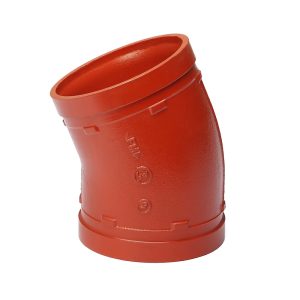
If you’re hunting for reliable grooved pipe fitting elbows, Vicast stands out. Founded back in 1982 as part of Hebei Jianzhi Foundry Group, they’ve got over 40 years cranking out top-notch ductile iron fittings. With a massive 1.4 million square meter factory and 4,500 folks on staff – including 350 engineers – they hit ISO 9001 for quality and ISO 14001 for eco-stuff. Their elbows? Built tough, meeting global standards, and used in everything from skyscrapers to subways. Distributors span 100+ countries, and they’ve snagged over 200 patents. Bottom line: if you need elbows that install quick and last, Vicast’s got your back.
Wrapping It Up: Efficiency That Lasts
So, there you have it – a real-world win where grooved elbows turned a potential headache into a smooth sail. On large-scale projects like the National Centre, cutting installation time isn’t just nice; it’s essential for staying on budget and schedule. This case study shows how picking the right fittings can ripple through the whole build, boosting safety, slashing costs, and delivering results that stand the test of time. If your next gig’s got pipes involved, think grooved – it might just be the edge you need.
FAQs: Your Questions on Grooved Elbows Answered
What exactly are grooved elbows, and how do they work in a case study like this?
Grooved elbows are pipe fittings with indented ends that lock into couplings for quick connects. In the National Centre for the Performing Arts case study, how grooved elbows reduced installation time on a large-scale project came down to their snap-fit design – no welding needed, just groove and clamp. They handled the curved HVAC runs flawlessly, cutting hours per joint.
Can grooved elbows really handle high-pressure systems on big projects?
You bet. Made from ductile iron like ASTM A536, they withstand temps from -29°C to 82°C and pressures in fire or industrial setups. In our case study, how grooved elbows reduced installation time on a large-scale project also meant zero leaks under test, proving they’re tough for spots like Beijing’s seismic areas.
Are there cost savings beyond just faster install?
Absolutely. Less labor means lower bills, plus easier maintenance down the line. The case study on how grooved elbows reduced installation time on a large-scale project showed 20% savings on piping costs alone, not to mention fewer tools and training headaches.
How do I know if grooved elbows are right for my project?
Look at your scale and constraints. If it’s tight spaces or quick turnaround, like in the Egg’s build, they’re a fit. Check standards like ISO 6182 – and yeah, test a small run first to see the time drop.
Any downsides to using grooved elbows in large-scale setups?
Not many, but initial grooving tools cost a bit upfront. In the case study, how grooved elbows reduced installation time on a large-scale project outweighed that – minor groove tweaks were the only snag, fixed fast. Overall, pros dominate for most industrial gigs.

